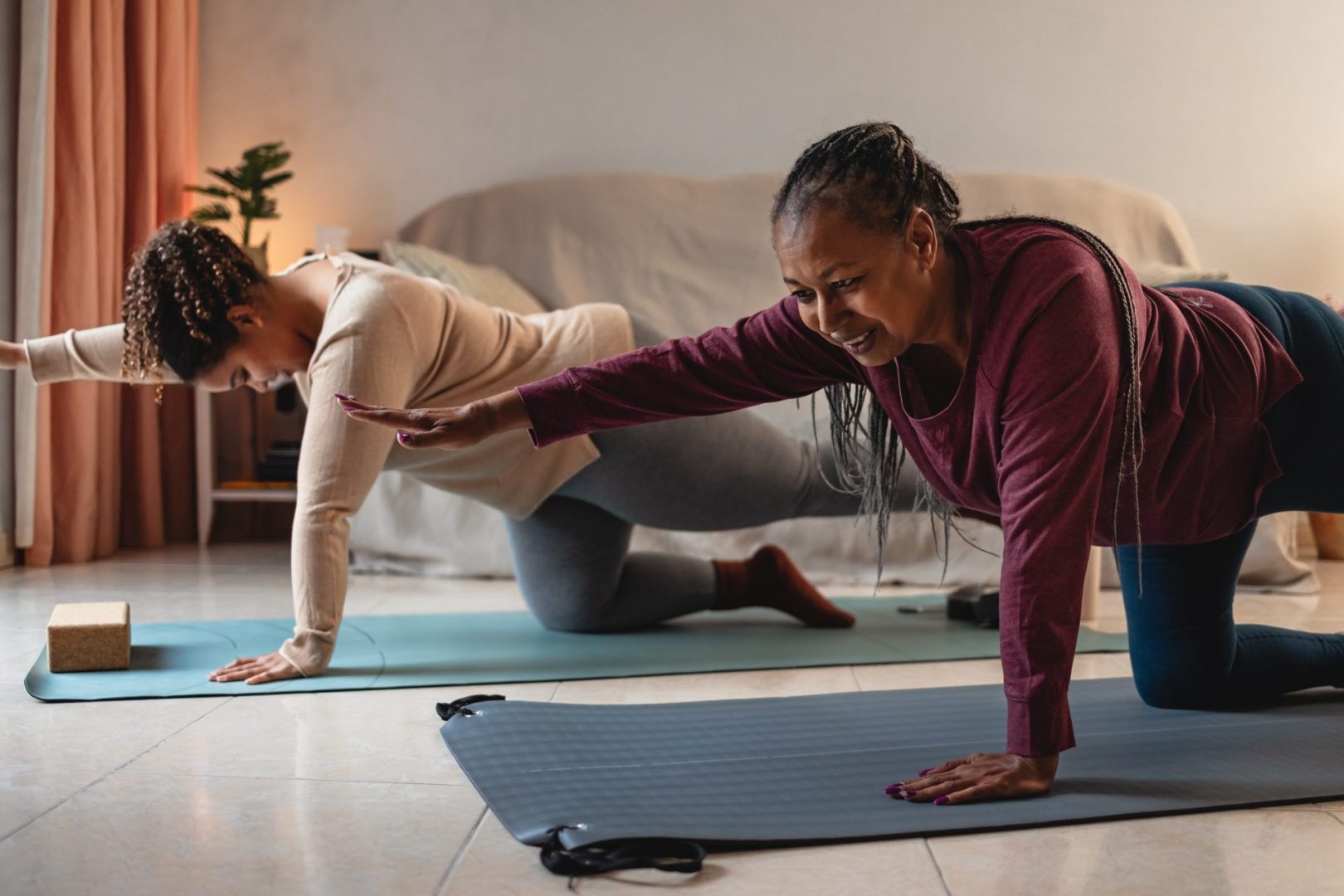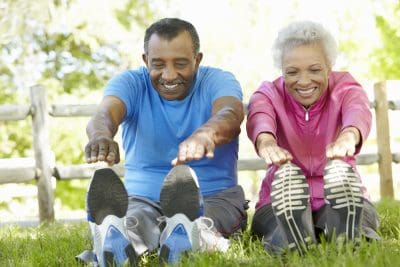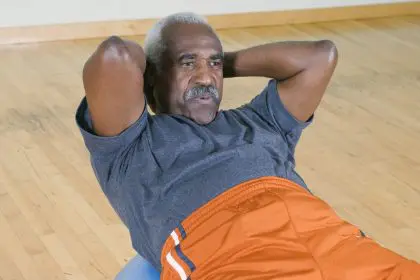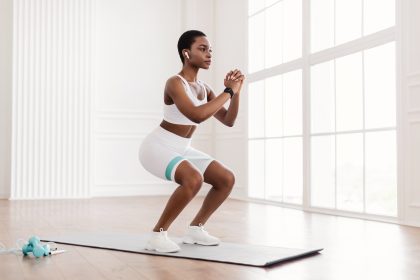Falls represent one of the most serious health risks for adults as they age, with one in four Americans over 65 experiencing a fall each year. These incidents aren’t merely inconvenient—they’re the leading cause of both fatal and non-fatal injuries among older adults, often resulting in broken bones, head injuries, and a cascade of complications that can permanently alter quality of life.
What many don’t realize is that fall risk isn’t an inevitable part of aging. The right balance exercises, performed regularly in the comfort of home, can dramatically reduce the likelihood of falls while enhancing overall mobility and confidence. Research suggests that consistent balance training can reduce fall risk by up to 40 percent—a remarkable return on a small daily investment of time.
Here are four scientifically-backed balance exercises that require minimal equipment and space, yet offer maximum protection against falls when practiced regularly.
1. Single leg stand builds ankle stability
Perhaps the simplest yet most effective balance exercise is the single leg stand, which targets the stabilizing muscles in your ankles, knees, and hips while enhancing your body’s proprioception—your awareness of where your body is in space.
To perform this exercise safely, position yourself next to a sturdy chair or countertop that won’t move when you put weight on it. Begin by standing tall with feet hip-width apart and your support nearby.
Slowly shift your weight to your right foot, using your hand on the chair for stability as needed. When you feel steady, lift your left foot slightly off the floor, balancing on your right leg. Hold this position for 10 seconds initially, gradually working up to 30 seconds as your balance improves.
Lower your foot and repeat on the opposite side, completing three rounds on each leg.
The beauty of this exercise lies in its adaptability. Those with limited balance can start by holding the chair with both hands, then progress to one hand, then just fingertips, and eventually perform the exercise without support when ready.
Studies show this simple practice can improve single-leg standing time by 20-30 percent within six weeks, translating directly to better stability during daily activities like walking, reaching, and navigating uneven surfaces.
2. Heel-to-toe walk enhances walking stability
The heel-to-toe walk, also called the tandem walk, mimics walking on a tightrope and trains your brain and body to maintain balance during locomotion—a critical skill for preventing falls while moving throughout your home.
Find a clear pathway in your home, ideally near a wall or countertop that can provide occasional support if needed. Begin by standing tall at one end of your chosen path.
Place your right heel directly in front of the toes of your left foot, creating a straight line as if walking on a narrow beam. Your feet should touch or nearly touch, with the heel of your front foot connecting with the toes of your back foot.
Continue this pattern, placing the heel of your left foot in front of the toes of your right foot, proceeding slowly and deliberately along your path. Aim for 10-20 steps daily.
If this proves too challenging initially, start with your feet slightly apart rather than directly in line, gradually narrowing your stance as balance improves.
This exercise specifically targets mediolateral stability—your ability to control side-to-side motion—which research identifies as crucial for preventing the sideways falls that often result in hip fractures. Regular practice improves the coordination between your visual system, inner ear, and muscles to maintain stability while in motion.
3. Clock reach trains multidirectional stability
The clock reach exercise prepares your body for the multidirectional movements of daily life, strengthening the muscles that prevent falls when reaching for objects or changing direction suddenly.
Begin by imagining you’re standing in the center of a large clock face, with 12 o’clock straight ahead of you and 6 o’clock behind you. Position a sturdy chair within arm’s reach for support as needed.
Stand on your left foot with your weight balanced in the center. Extend your right foot toward the imaginary 12 o’clock position, lightly tapping the floor with your toes before returning to center. Maintain your balance on your left foot throughout the exercise.
Continue the pattern, reaching toward 3 o’clock (directly to your right), then 6 o’clock (behind you), and finally 9 o’clock (to your left). Return to center between each reach.
Complete 5-10 repetitions reaching to each “hour” position, then switch to standing on your right foot and reaching with your left.
As your balance improves, increase the distance of your reach and reduce your reliance on the chair for support. For an added challenge, try reaching with your hand instead of your foot, extending your arm while maintaining balance.
This exercise excels at training your body to respond to shifts in balance from multiple directions, preparing you for the unpredictable nature of real-world movements that often precede falls.
4. Sit-to-stand builds crucial leg strength
The ability to rise from a seated position ranks among the most fundamental movements for independent living, yet many adults lose this essential skill as leg strength diminishes with age. The sit-to-stand exercise directly addresses this concern while simultaneously training balance.
Begin with a sturdy chair placed against a wall to prevent it from sliding backward. The ideal chair height allows your knees to bend at approximately 90 degrees when seated, with your feet flat on the floor.
Sit toward the front edge of the chair with your feet hip-width apart and flat on the floor. Place your hands lightly on your thighs or cross them over your chest if you’re able.
Lean slightly forward from the hips (this crucial step brings your center of gravity over your feet), and push through your heels to stand up completely, using your hands for assistance only if necessary.
Pause at the top, then control your descent as you slowly return to a seated position. Repeat 8-12 times for one set, aiming for 2-3 sets daily.
As this exercise becomes easier, progress by using a lower chair, crossing your arms over your chest, or holding the position at the halfway point for several seconds before completing the movement.
Research consistently identifies the sit-to-stand as one of the most effective exercises for fall prevention, directly translating to improved stability during transitions that commonly trigger falls. Studies suggest this single exercise can reduce fall risk by up to 40 percent when practiced regularly.
Creating a safer practice environment
To maximize benefits while minimizing risks during balance training, create a dedicated practice space free from obstacles and tripping hazards. Remove loose rugs, secure electrical cords, and ensure adequate lighting.
Wearing proper footwear can significantly impact your success with these exercises. Choose shoes with non-slip soles that provide good support, avoiding slippers, backless shoes, or going barefoot, which can increase fall risk.
The ideal time to practice balance exercises is when you’re feeling alert and energetic, typically earlier in the day for many people. Balance tends to naturally decline with fatigue, making morning or early afternoon sessions most productive.
Start with just 5-10 minutes daily, gradually increasing to 20-30 minutes as your comfort and ability improve. Consistency trumps duration—brief daily practice yields better results than occasional longer sessions.
Beyond exercise: complementary approaches to fall prevention
While these four exercises form the foundation of an effective home-based fall prevention program, a comprehensive approach includes attention to other factors affecting balance.
Vision plays a crucial role in maintaining stability. Ensure adequate lighting throughout your home, particularly in stairways, hallways, and bathrooms. Keep eyeglass prescriptions current, and consider adding contrasting strips to stair edges to improve depth perception.
Your home environment itself can either support or undermine balance efforts. Remove or secure loose rugs, repair uneven flooring, and install grab bars in bathrooms—areas where falls frequently occur.
Certain medications can affect balance through side effects like dizziness or blood pressure changes. Review all prescriptions with your healthcare provider annually, discussing any that might increase fall risk.
Finally, consider your vitamin D status, as deficiency correlates strongly with increased fall risk. Adequate levels support muscle function and bone health, both essential components of stability and fall recovery.
By combining these targeted balance exercises with environmental modifications and attention to overall health factors, you create a powerful defense against falls that can preserve independence and quality of life for years to come.















